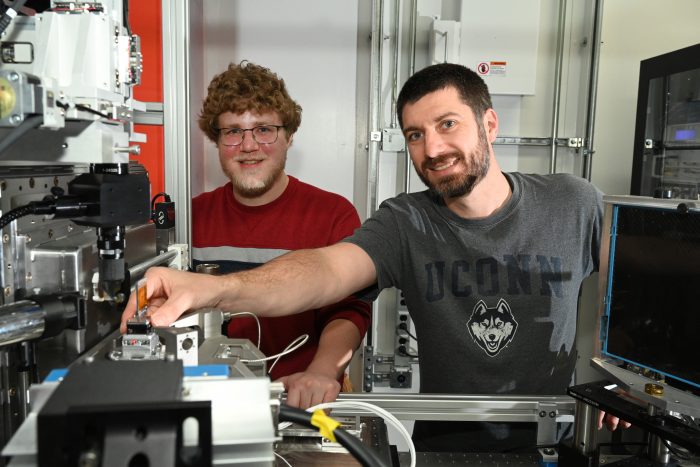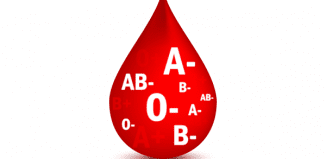BNL’s SRX beamline helps scientists and played important role for veterans

By Daniel Dunaief
When he took over to lead the sub micron resolution X-ray spectroscopy, or SRX, beamline at Brookhaven National Laboratory on January 1, 2020, Andrew Kiss expected to balance between improving the machinery and helping visiting scientists use it. The pandemic, however, altered that balance.
BNL received components for the beamline in December 2019, when the researchers were going to try to take a fraction of the available x-ray time to install and commission it, all while still running experiments. The pandemic, however, kept scientists from visiting the site. That meant Kiss and his colleagues could dedicate more time to technical enhancements.
“Since the pandemic shut down the user program, this gave us an opportunity to focus all of our time on the new equipment” that visiting researchers could tap into when they returned, he explained in an email.
The beamline, which postdoctoral researcher Evan Musterman is enhancing further with diffraction techniques to reveal information about strain (see related story here), is in high demand. During the current cycle, 324 researchers applied for beamline time, while 99 time slots were allocated.
Scientists have a range of ways of discovering which beamline might best suit their research needs, including word of mouth. Kiss has had conversations with researchers who describe how they read something in a research paper and have similar goals.
Scientists “usually have a good idea of what instrument/ facility to use and why it is good for their research so informal conversations at conferences and seminars can be very useful,” Kiss said.
Most of Kiss’s time is dedicated to ensuring the stability and reliability of the beamline, as well as extending its capabilities to scan larger regions with less overhead, he explained.
“All of this is to help the researchers that come to the beamline, but my hope is that with this baseline of reliable and fast data acquisition, I can focus more on scientific topics such as metal additive manufacturing,” Kiss wrote.
With the SRX, Kiss can explore applied questions related to corrosion effects or how a material is modified by exposure to different gases, liquids or other parameters.
Working at the beamline has given Kiss an unusual perspective outside the lab. A few years ago, he received a notification about a recall on baby food he purchased that could have elevated levels of something unhealthy in it. His second thought, after making sure he didn’t give any to the child, was to wonder how much was in the food and if he could measure it. Before he could bring it to the lab, the contaminated food was already taken away with the garbage.
Kiss enjoys his work and suggested that the field attracts a “certain type of person and, once you are there, it is tough to pull yourself away from the instrument and the community of researchers around you,” he explained.
In addition to making basic discoveries in fields such as materials science, Earth science and biological sciences, the SRX beamline has played an important role in studies that have affected public policy.
Indeed, a study in 2022 showed that veterans who worked in Iraq and Afghanistan near burn pits had oxidized particles of iron and titanium in their lungs. “This is not direct evidence it came from a burn pit, but these were not seen in healthy lungs,” Kiss said. Only a few places in the world had the kind of machinery with a bright enough source and high enough resolution to discover these particles.
Kiss and collaborators from other laboratories, universities and medical institutions appreciated the opportunity to have a “positive impact on these soldiers’ lives by providing the measurements to get them help,” he said. The discovery of these elements in the lungs of veterans who lived near burn pits and suffered health consequences, which the study at SRX and other facilities helped demonstrate, led to the Pact Act, which President Joe Biden signed into law in 2022 and which provides $280 billion in federal funding for the health effects veterans suffer after exposure to such toxins.
SRX has high spatial resolution and is highly sensitive to trace concentrations for elemental mapping and chemical composition. SRX is an x-ray fluorescence microscope with “high spatial resolution and highly sensitive to trace concentrations for elemental mapping and chemical composition,” Kiss said. “If that can be used to help people’s lives, that is a wonderful thing.”






